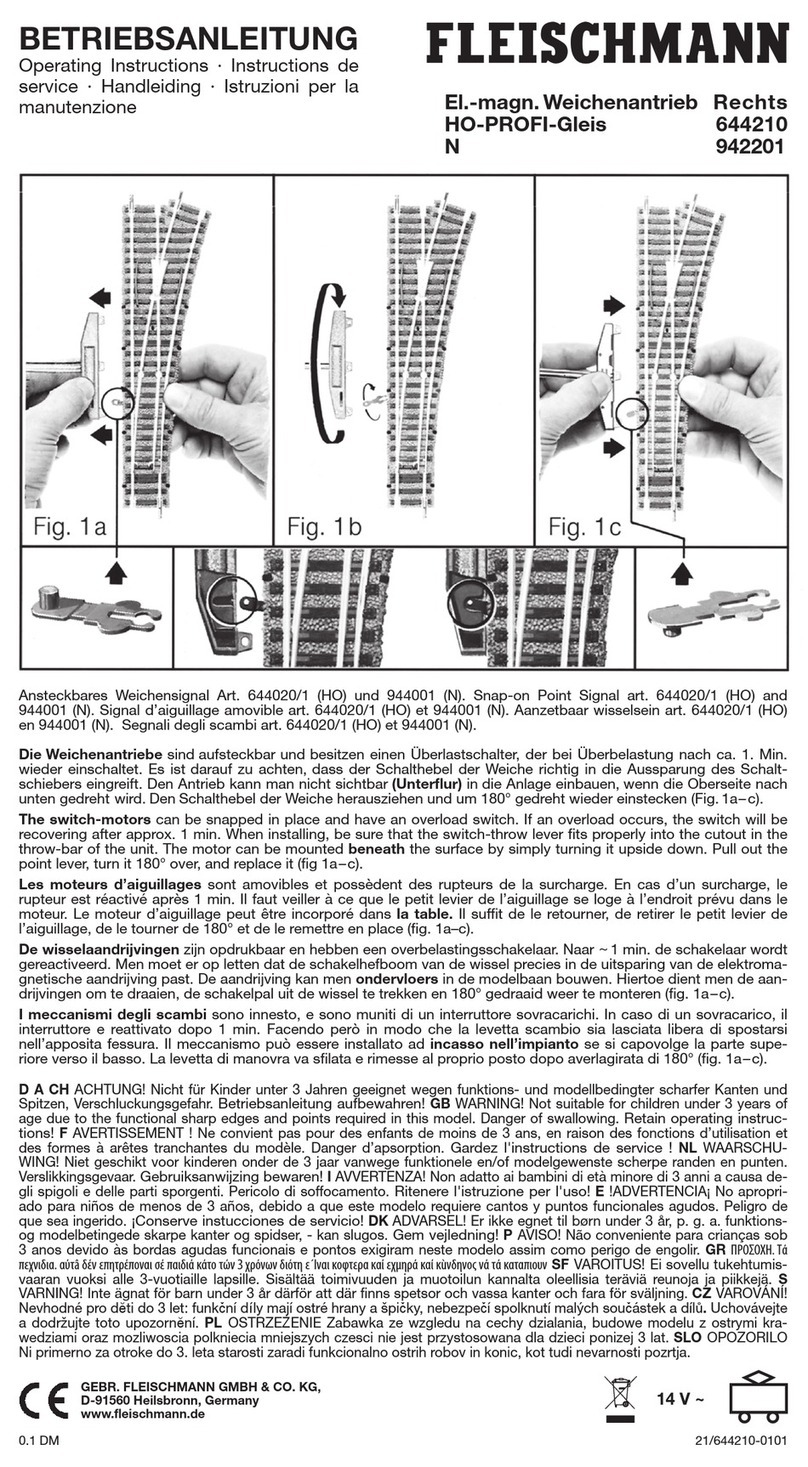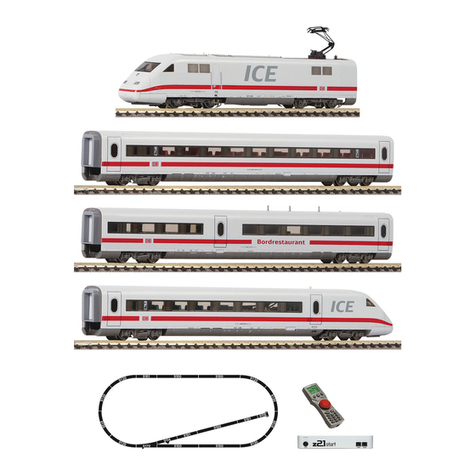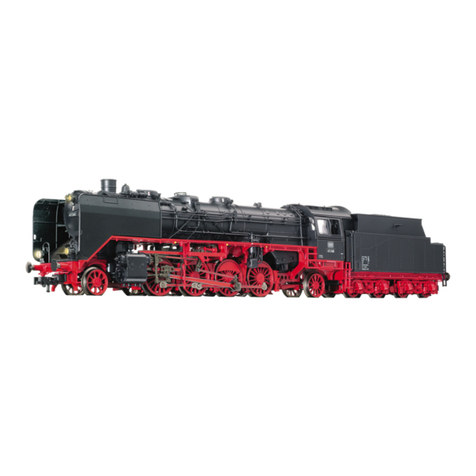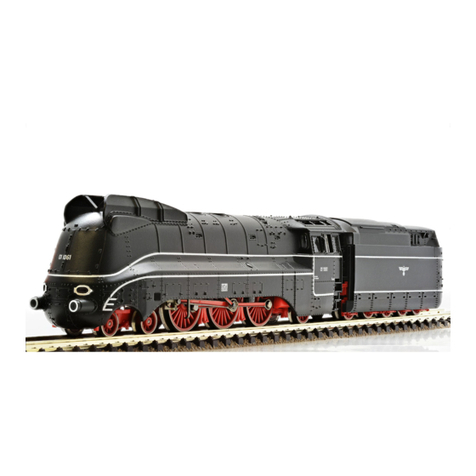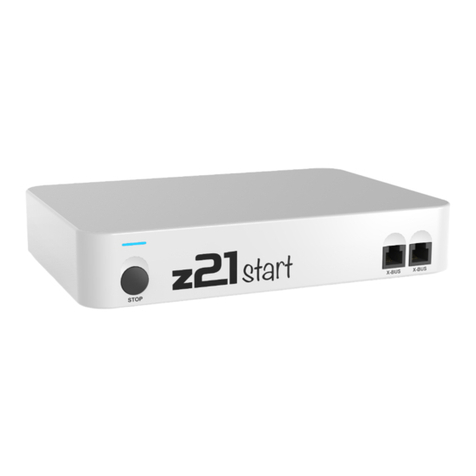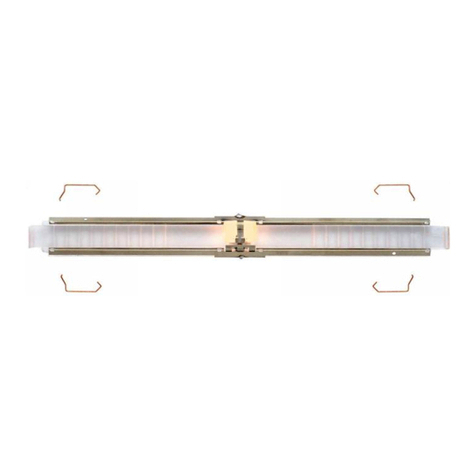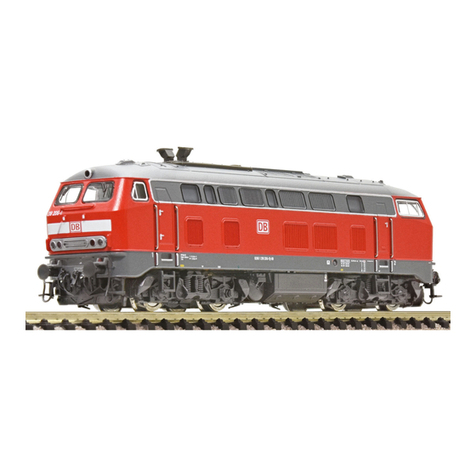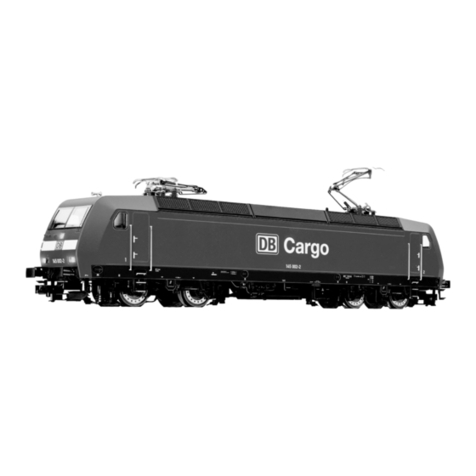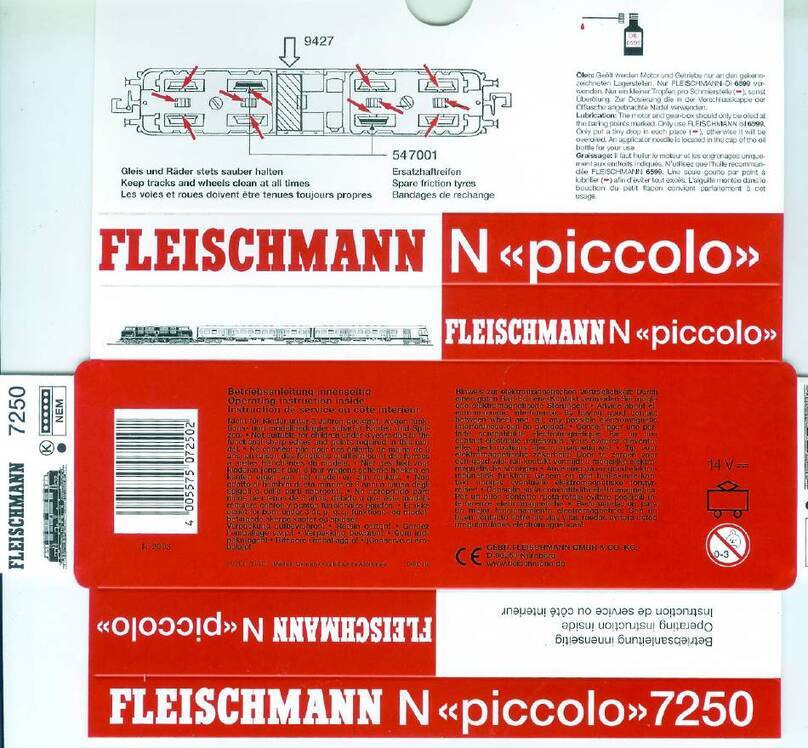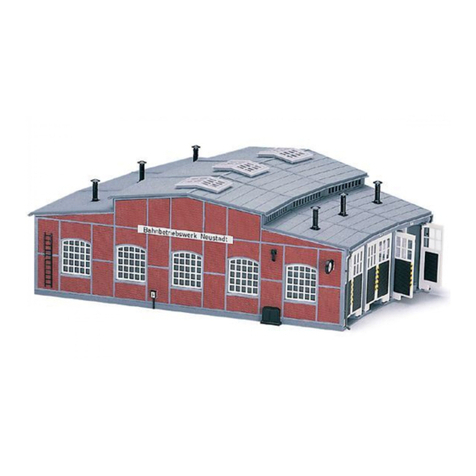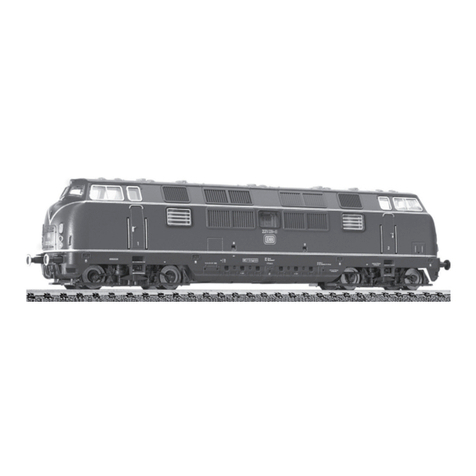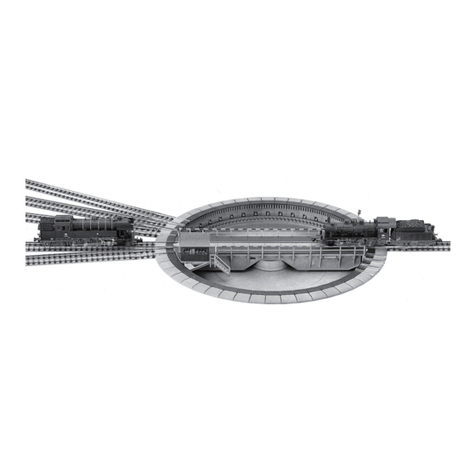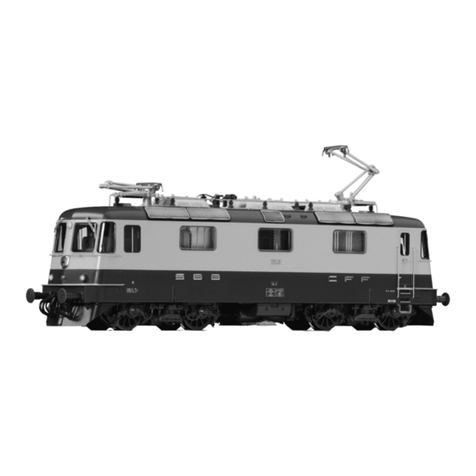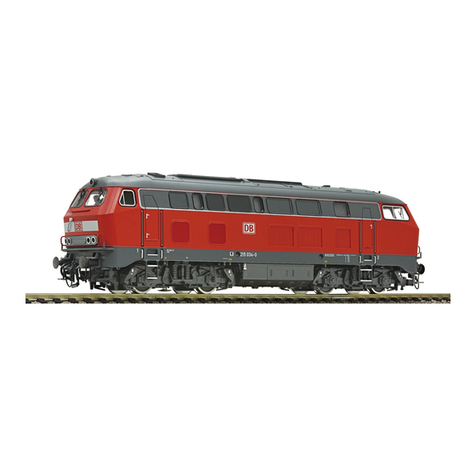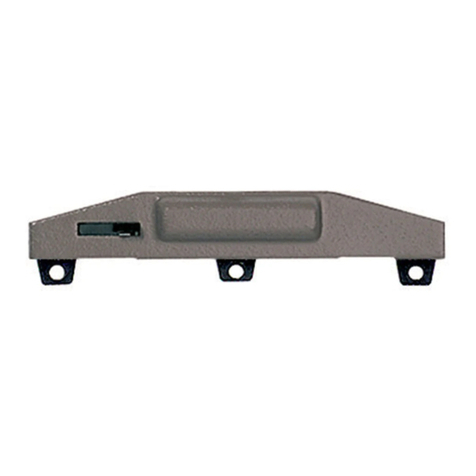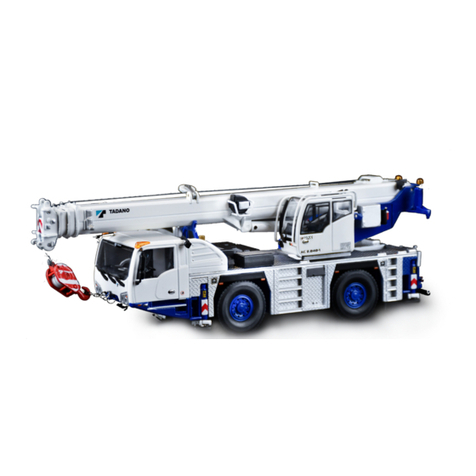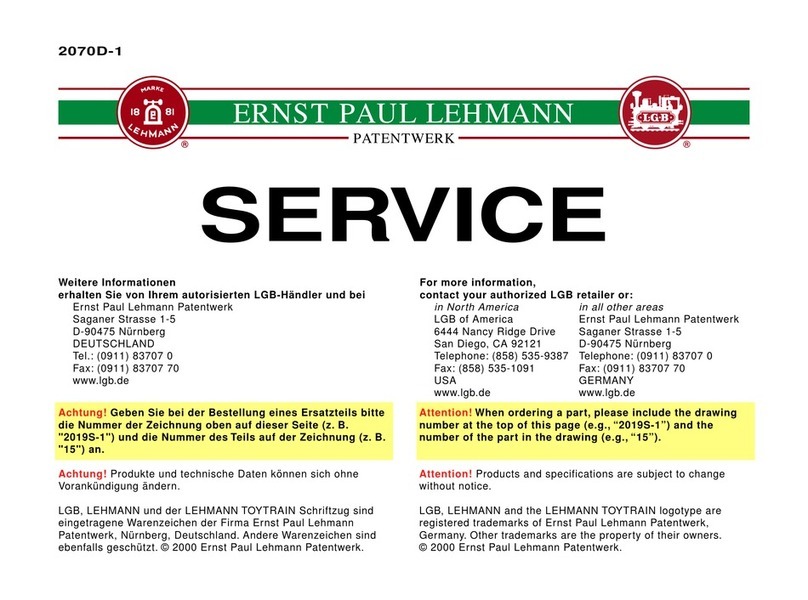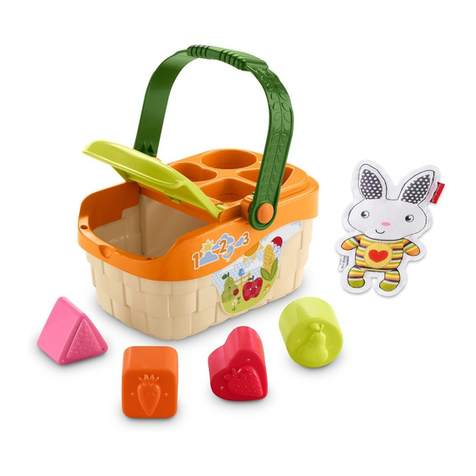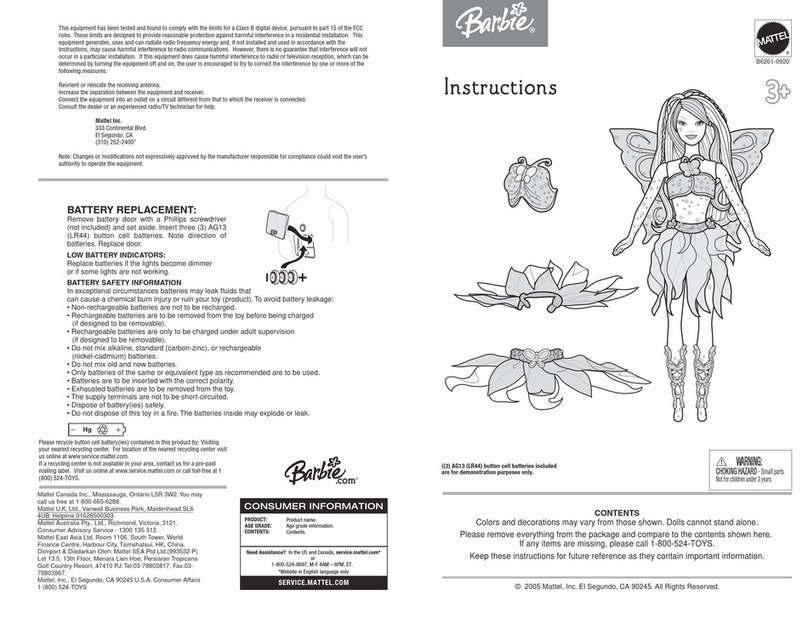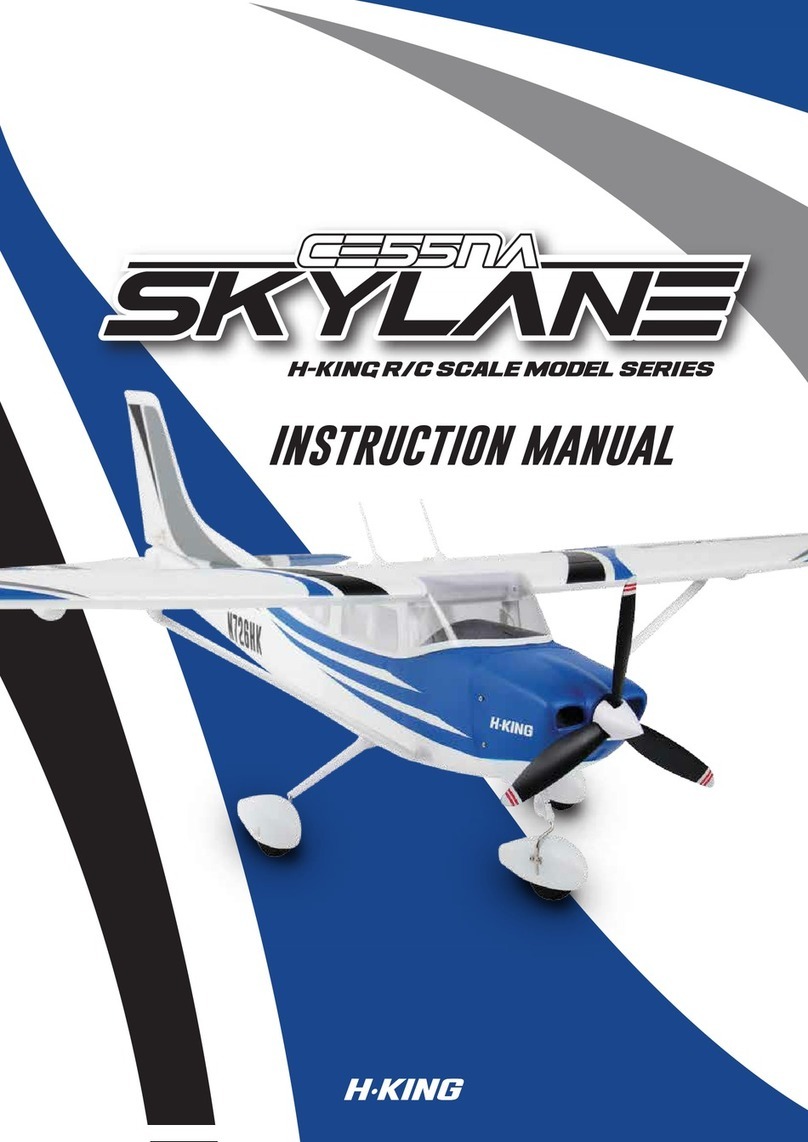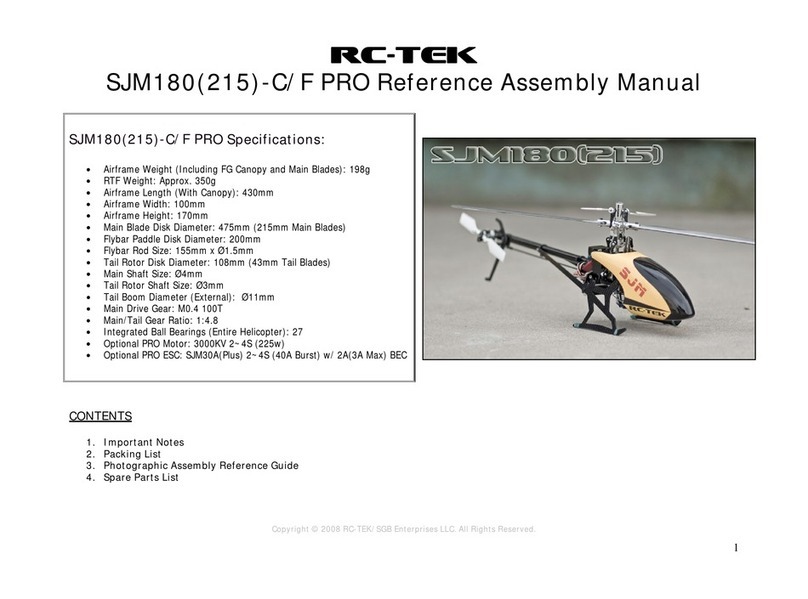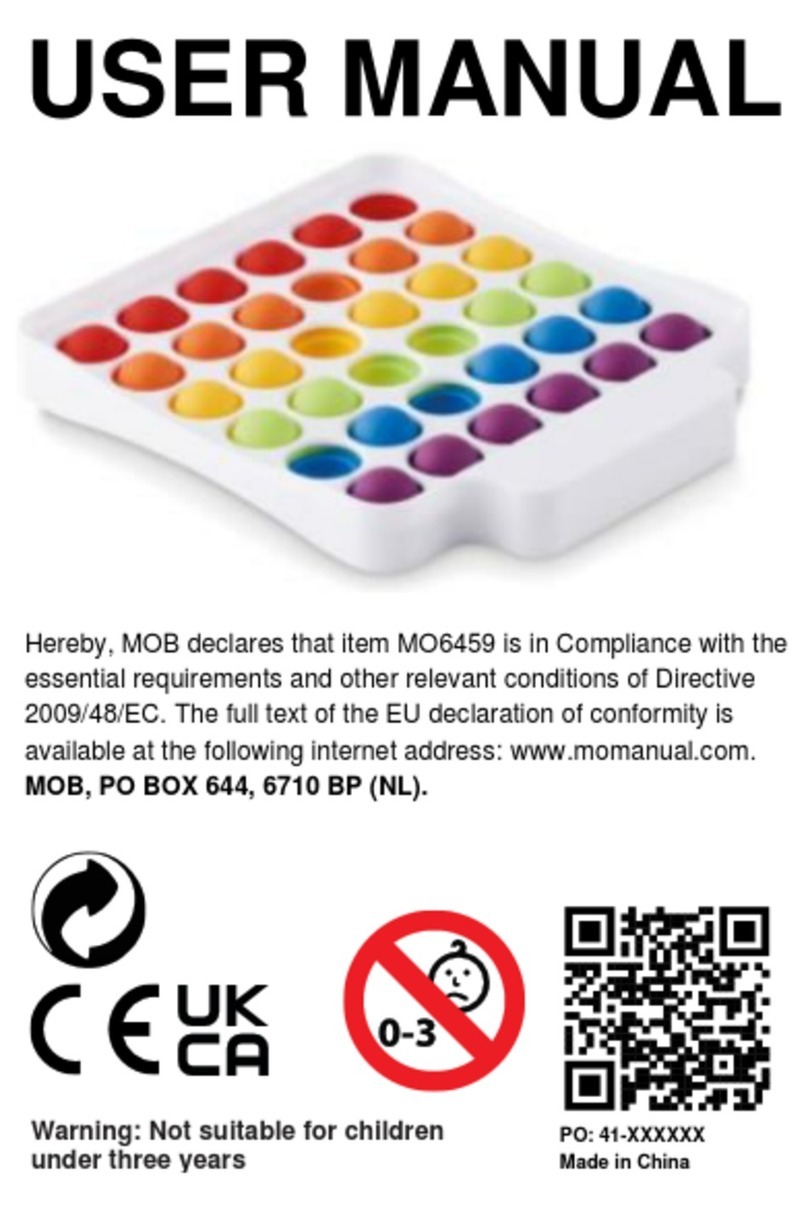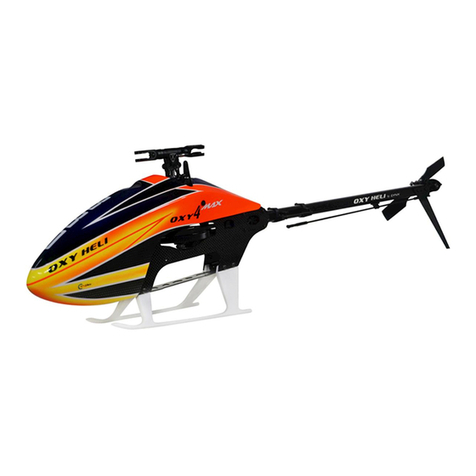
Änderungen von Konstruktion und Ausführung vorbehalten! • We reserve the
right to change the construction and design! • Nous nous réservons le droit
de modier la construction et le dessin!
Bitte diese Beschreibung zum späteren Gebrauch aufbewahren! • Please re-
tain these instructions for further reference! • Pi�re d‘bien vouloir conserver
ce mode d’emploi en vue d’une future utilisation!
Tel.: 00800 5762 6000 AT/D/CH (kostenlos / free of charge / gratuit)
International: +43 820 200 668
(zum Ortstarif aus dem Festnetz; Mobilfunk max. 0,42€ pro Minute inkl.
MwSt. / local tariff for landline, mobile phone max. 0,42€/min. incl. VAT /
prix d‘une communication locale depuis du téléphone fixe, téléphone mo-
bile maximum 0,42€ par minute TTC)
PLAQUE TOURNANTE 665201
Fig.1 : La plaque tournante FLEISCHMANN 665201 a été construite comme plaque tournante intégrée pour le syst�me de courant alternatif à conducteur central H0. Compl�te
avec une tranchée et une plate-forme de retournement, il s'agit d'un modèle dèle à la réalité. La plaque tournante est actionnée électriquement et peut être commandée à
distance par l'interrupteur de plaque tournante 6910, qui est inclus. L'interrupteur s'adapte à la commande diagrammatique FLEISCHMANN.
Installation (g. 2) :
Pour installer la plaque tournante, vous aurez besoin d‘un trou de 340 mm de diamètre dans votre plan d‘aménagement. Il n‘est pas nécessaire de le xer, car la plaque tour-
nante s‘arrêtera sur les rails xés. Si la plaque tournante doit être posée sur le plan, une base en polystyrène (ou similaire) doit être posée en dessous. Dans ce cas, des rampes
d‘entrée et de sortie de 30 mm de haut doivent être créées pour les voies. La plaque tournante est divisée en sections de 7,5° avec un maximum de 48 connexions de rails pos-
sibles. Les sections de 7,5° sont prévues pour correspondre aux positions debout de 3 locomotives dans le hangar à locomotives 6476. La plaque tournante peut également
être congurée pour fonctionner avec des sections de 15°. Dans ce cas, une seule plaque de recouvrement doit être laissée entre les voies de garage.
Raccordement du moteur de la plate-forme (g. 3) :
Les 3 ls, rouge, jaune et gris doivent être connectés aux ls correspondants de l‘interrupteur, si nécessaire avec le connecteur 6941. Le l noir B et le l blanc A de l‘interrupteur
6910 doivent être connectés à l‘enroulement CA du transformateur (marqué ~, ou O et L). Valeur de connexion : 12 - 14 V / 0,5 A.
Faire tourner la platine à la main, voir g. 8 et g. 9.
Raccordement du courant à la plate-forme : Systèmes à courant alternatif à conducteur intermédiaire. Les deux ls jumelés jaunes C1 + C2 de la plaque tournante sont
connectés à l‘une (O), le l blanc D à l‘autre (B) borne de la connexion de courant d‘entraînement CA sur le transformateur de régulation. Le courant pour le rail lui-même dépend
de la position de la plate-forme. Ainsi, seule la ligne de la plaque tournante est alimentée en courant. Toutes les autres lignes restent sans courant, ce qui permet d‘y laisser des
locomotives. Le courant doit être coupé lorsque la plate-forme est tournée (g. 3).
Commande de la voie de raccordement (g. 4) :
Avec cet aiguillage 6910, la plate-forme peut être tournée vers la gauche ou vers la droite à l‘aide de l‘interrupteur noir. La plate-forme s‘arrête automatiquement à chaque
voie. Une action continue jusqu‘à la position choisie est possible si l‘interrupteur est poussé dans le sens de la marche jusqu‘à sa limite extérieure, jusqu‘à ce que la position
soit atteinte. Une fois cette position atteinte, la plate-forme s‘arrête en appuyant dans la direction opposée.
Fonctionnement du réseau avec deux transformateurs ou plus (g. 5) :
La zone de la plaque tournante doit être contrôlée par un transformateur/contrôleur séparé. Toutes les lignes qui passent dans la zone de la plaque tournante doivent être
coupées à l‘aide de deux éclisses de séparation 6433.
Extension (g. 6) :
Le kit d‘extension 665301 permet de rallonger la plaque tournante de trois connexions de rail. Le plateau tournant doit être éloigné de la zone des pièces installées. Les plaques
de recouvrement sont maintenant tirées vers le haut en repoussant les languettes d‘aiguillage à ressort (g. 7), et coincées dans la voie d‘accès. Chaque voie d‘accès doit être
placée en face d‘une section aveugle ou d‘une autre voie d‘acc�s.
Rotation manuelle du plateau tournant (g. 8) :
En face du boîtier du moteur, sous la plaque tournante, se trouve un petit levier noir. En poussant le levier vers le centre, la roue dentée d‘entraînement est retirée des dents
de l‘anneau d‘entraînement extérieur, ce qui libère le plateau tournant et permet de la déplacer manuellement dans la direction souhaitée. Lorsque le levier est relâché, la
roue dentée est à nouveau engrenée dans la bague extérieure. Veillez toutefois à ce que les voies de rotation soient alignées sur les voies de sortie. Si la plaque tournante ne
fonctionne pas, il suft d‘appuyer légèrement sur le levier en actionnant l‘interrupteur 6910 pour que la roue dentée soit fermement enclenchée dans l‘anneau d‘entraînement,
ce qui la mettra en mouvement. Elle s‘arrêtera ensuite à nouveau sur la voie suivante (g. 9).
Huilage du moteur (g. 10) :
Pour lubrier les roulements du moteur, il faut enlever le couvercle de la grille située à l‘avant de la salle des machines. Pour ce faire, il faut d‘abord retirer deux parties opposées
de la fosse (g. 7). Le pont est ensuite placé à la main sur les deux interstices selon la gure 8 et la vis située entre les rails de la scène est enlevée à l‘aide d‘un tournevis (g.
10).Le couvercle de la grille est maintenant soulevé d‘un côté et repoussé en direction du bord de la fosse. Le couvercle de la grille se déverrouille alors et peut être enlevé.
Attention ! Ne pas égarer le ressort de contact situé sous la vis et le remettre correctement en place lors du remontage. Par les deux trous (g. 11) situés à l‘avant du comparti-
ment moteur, versez une goutte d‘huile sur les roulements marqués d‘une èche. Attention ! Ne pas appliquer trop d‘huile (uniquement de l‘huile FLEISCHMANN 6599).
Démontage de la plaque tournante
Si le plateau tournant ne démarre toujours pas après avoir actionné le levier manuel, il faut le démonter. De chaque côté du plateau tournant, on retire au moins 2 sections
opposées (voir Fig. 7). Avec un tournevis, enlever la vis (voir Fig. 10,1) entre les rails de la plateforme. La plate-forme peut maintenant être introduite dans cette découpe et être
retirée. Les pistes de contact à côté du pivot et les ressorts de contact doivent être nettoyés. Le montage de la plate-forme s‘effectue dans l‘ordre inverse.
F
Rotating the turntable by hand (g. 8):
Opposite the motor housing, under the turning table, is a small black lever. By pressing the lever towards the centre, the drive gear wheel is withdrawn from the teeth in the
outer drive ring releasing the table so that it can be moved manually in the desired direction. When the lever is released the gear wheel is again enmeshed with the outer-ring.
Ensure, however, that the rotating tracks are lined up with the exit tracks. Should the turntable not operate, when pressing the switch 6910, simply press the lever slightly to
ensure the gear wheel is rmly seated in the drive ring, which will then start it moving. It will then stop at the next track again (g. 9).
Oiling the motor (g. 10):
For lubricating the bearings of the motor, the grille cover in front of the engine room must be taken off. To do this, two opposite parts of the pit must rst be removed (g. 7).
Now the brigde is placed according to g. 8 by hand onto the two gaps and the screw situated between the rails of the stage removed by means of a screwdriver (g. 10).
The grille cover is now lifted up to one side and pushed back in direction of the pit border. By this, the grille cover unlocks and can be taken off . Attention! Do not misplace
the contact spring situated below the screw and ret correctly when reassembling. Through the two holes (g. 11) in front of the engine house one drop oil is to apply to the
bearings marked by arrows. Attention! Do not apply too much oil (only FLEISCHMANN oil 6599).
Dismantling the table
Should the turntable not operate by moving the lever, it will be necessary to dismantle the table. For this, proceed as already described for oiling. On each side of the platform
take off 2 opposing components (g. 7). Now the platform can be removed. The contact points and springs round the central pivot should be cleaned. To put the table back
together simply reverse the procedure. In the unfortunate instance that the turntable should still not function, please return it to your local dealer or to your supplier.
80665201920 X / 2023
Modelleisenbahn GmbH •5101 Bergheim •Austria
80665201920 FLM X_2023.indd 480665201920 FLM X_2023.indd 4 19.10.2023 08:27:4919.10.2023 08:27:49




